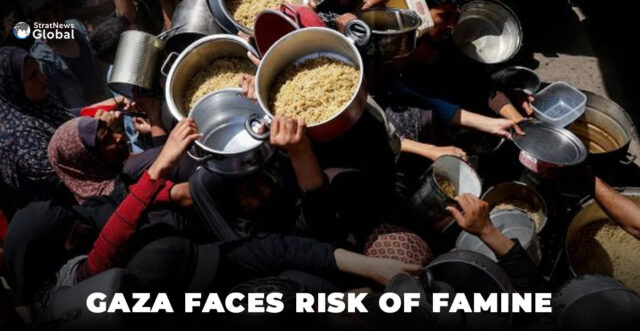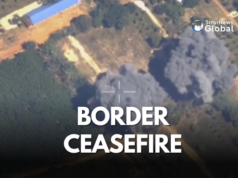A global hunger monitor reported on Monday that half a million people in the Gaza Strip are at risk of starvation, warning that the Israeli-blockaded territory continues to face a critical risk of famine, with a high likelihood of one occurring by the end of September.
The Integrated Food Security Phase Classification (IPC)’s latest report cited a significant deterioration in the situation since its last one in October, reflecting warnings from international agencies of an unfolding catastrophe in the small, densely populated Palestinian territory.
It forecast that 2.1 million people across Gaza – roughly the entire population – would likely experience high levels of acute food insecurity resulting in famine by the end of September, with 469,500 of them projected to likely hit “catastrophic” levels.
Israel has sealed off the Gaza Strip since early March when it resumed its devastating military campaign against terrorist group Hamas following the collapse of a ceasefire deal, during which thousands of aid trucks entered the enclave.
Israeli government spokesperson David Mencer said on Monday the IPC had “constantly talked about famine; famine has never happened because of Israel’s efforts to get more aid in.”
Mencer reiterated Israel’s accusation that Hamas had caused hunger by stealing aid meant for civilians, and had “engineered the humanitarian crisis”.
Hamas Blames Israel
Hamas denies these accusations and has in turn accused Israel of using starvation as a weapon of war.
The IPC report said that Israeli plans for large-scale military operations in Gaza, along with aid agencies’ “persistent inability” to deliver essential goods and services, meant that there was a “high risk” of famine in the projection period from May 11 to September 30.
Israeli President Isaac Herzog on Monday called on the international community to help with a new plan to distribute aid directly to the people of Gaza and cut Hamas out of the process.
The IPC report said the Israeli authorities’ plan for delivering aid was “estimated to be highly insufficient to meet the population’s essential needs for food, water, shelter and medicine”.
“Moreover, the proposed distribution mechanisms are likely to create significant access barriers for large segments of the population,” it said.
“Immediate action is essential to prevent further deaths, starvation and acute malnutrition, and a descent into famine.”
For famine to be declared, at least 20% of the population must be suffering extreme food shortages, with one in three children acutely malnourished and two people out of every 10,000 dying daily from starvation or from malnutrition and disease.
The report projected that nearly 71,000 cases of acute malnutrition, including 14,100 severe cases, among children aged 6 to 59 months were expected to occur between April 2025 and March 2026.
IPC reports are produced with contributions from U.N. agencies, NGOs and other organisations.
Deterioration
The report “really demonstrates that the situation in Gaza has deteriorated quite dramatically in recent months,” said Beth Bechdol, deputy director of the U.N. Food and Agriculture Organization (FAO).
“Since March 2, the comprehensive blockade … has really prevented the delivery of essential humanitarian and even commercial supplies,” she said.
“We can certainly assume that the types of numbers that we’re seeing in this report … will only continue to escalate,” she said. The report shows that there are “a very large number of people now facing starvation”, she added.
While noting that the two-month-long ceasefire had allowed for a temporary alleviation of acute food shortages and malnutrition, the IPC report said the ongoing blockade had reversed the situation.
The key findings showed that 1.95 million people, or 93% of the population in the coastal enclave, are living through high levels of acute food insecurity, including 244,000 experiencing the most severe, or “catastrophic”, levels.
IPC’s October analysis had said 133,000 people were in the “catastrophic” category.
In Gaza City, Ghada Mohammad, a mother of five, said she had to pay around 1,000 shekels ($281) to buy a 2-kg sack of flour, which would usually have cost 25 shekels before the war and during ceasefire periods in January and February.
She cited dependence on canned food, unhealthy water, and bread made with insect-infested flour. “Do you know how it feels to be unable to have one meal with some chicken or vegetables or meat for several weeks?”
($1 = 3.5503 shekels)
(With inputs from Reuters)





